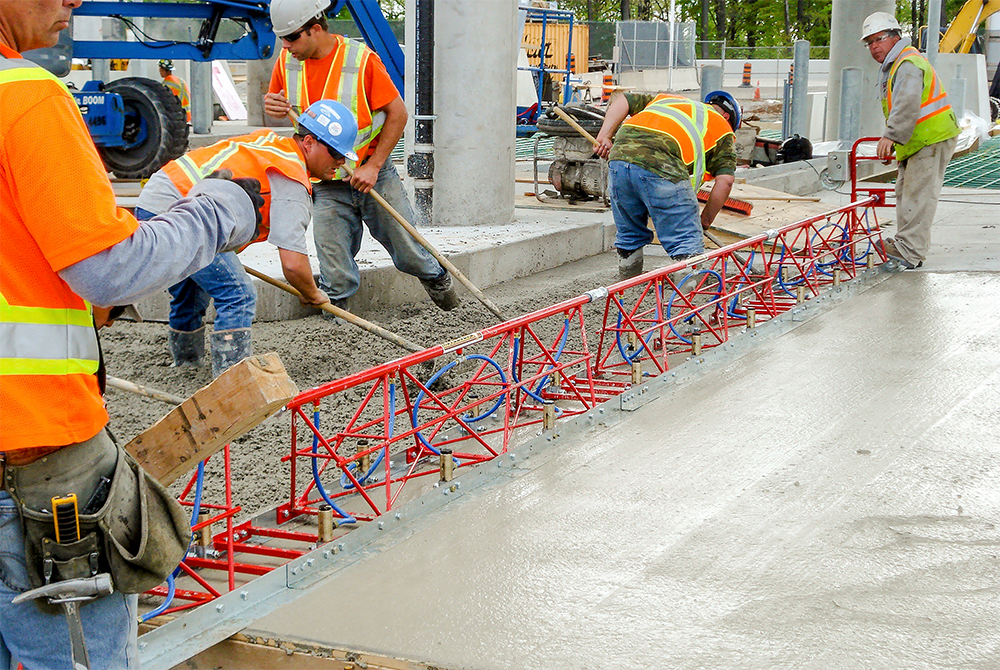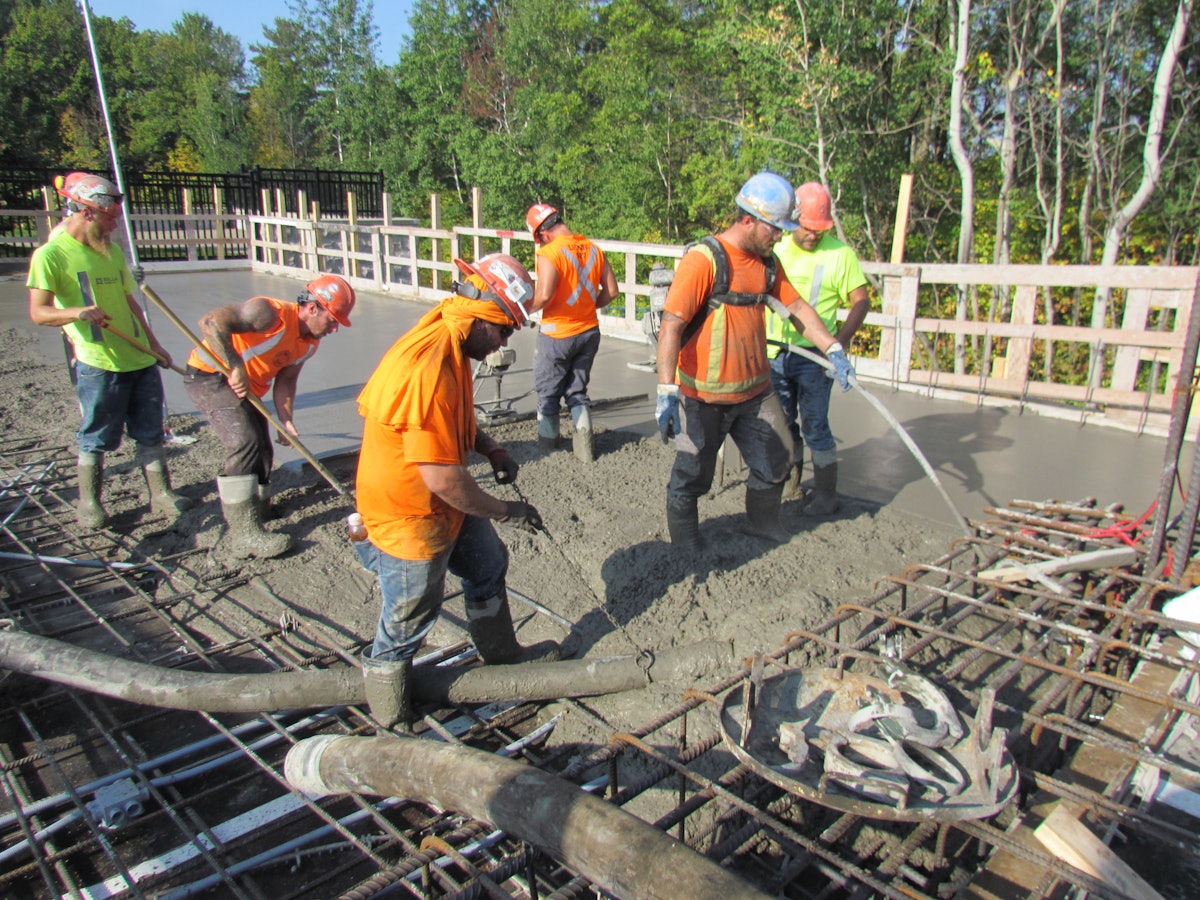The Vital Duty of Concrete Foundation in Structural Integrity and Durability
When it pertains to constructing a residential or commercial property, the structure is more critical than you may believe. Concrete foundations give unparalleled stamina and longevity, ensuring your framework can endure different ecological challenges. Without a solid base, you run the risk of potential concerns like shifting or fracturing, which can compromise security and value. Comprehending the nuances of concrete foundations might be the trick to preserving your financial investment for several years ahead. What should you consider following?
Comprehending the Importance of Concrete Foundations
Concrete foundations are crucial to the total security of any kind of framework, as they supply the crucial assistance required to endure various tons and ecological problems. When you think about constructing a home or an industrial area, the structure is the very first thing you should consider. It functions as a barrier against moisture, securing your building from water damages. A well-placed concrete structure likewise protects against settling and shifting, which can bring about splits in wall surfaces and floorings. You'll intend to guarantee that the foundation is properly made and reinforced, as this affects the longevity of your building. Furthermore, a solid structure can enhance energy effectiveness by reducing air leakages. Remember, disregarding the importance of a concrete structure can lead to pricey fixings down the line. So, investing in a quality foundation upfront is necessary for the integrity and toughness of your framework.
Benefits of Concrete Structures for Structural Stability
While several elements add to a building's architectural stability, concrete structures offer unparalleled longevity and stamina. You'll value that concrete can withstand severe climate condition, resisting both moisture and temperature level fluctuations. This resilience means your structure is less most likely to experience fracturing or shifting with time, which can jeopardize its safety.Additionally, concrete's inherent weight provides a solid base, stopping movement during natural occasions like quakes or floods. When you choose a concrete foundation, you're additionally choosing reduced upkeep; unlike timber, it will not rot or draw in insects, saving you money and time in repairs.Moreover, concrete's fire resistance supplies added security, ensuring your framework can withstand heats without considerable damages. Generally, investing in a concrete structure implies you're focusing on the long-term stability and honesty of your structure, making it a wise selection for any kind of building and construction task.
Usual Kinds Of Concrete Foundations
When it pertains to building structures, recognizing the typical sorts of concrete foundations can aid you make informed selections for your project. One of the most common types consist of slab-on-grade, crawl space, and complete cellar foundations.A slab-on-grade structure is an easy, affordable choice, where a thick concrete slab is poured straight on the ground. This type functions well in warm climates, as it lessens warm loss.Crawl space structures raise the home slightly over ground, enabling air flow and accessibility to pipes and electrical systems. This design can help prevent dampness issues.Full basement structures offer extra living or storage area while providing excellent architectural assistance. They need even more excavation and are typically made use of in cooler climates to avoid frost heave.
Elements to Consider When Designing a Concrete Structure

Finest Practices for Installing Concrete Foundations
When you're mounting a concrete structure, proper website prep work is vital to assure stability (West Coast General Engineering industrial concrete Rancho Cucamonga). You'll also need to understand reinforcement techniques to improve stamina and toughness. Finally, don't overlook the curing process, as it plays a fundamental function in accomplishing a strong structure
Site Preparation Significance
Although it might appear simple, proper website preparation is vital for assuring a strong and long lasting concrete foundation. Begin by clearing the location of any particles, greenery, or natural material that can compromise the structure's stability. Next, analyze the soil kind and compaction; you might require to excavate or include products to produce a secure base. Degree the ground to ensure also weight distribution and prevent working out problems later. Mounting proper water drainage systems is also important to prevent water build-up, which can damage the foundation gradually. Mark out the structure's dimensions accurately to direct the putting process. By adhering to these actions, you'll set the phase for an effective concrete foundation that stands the test of time.
Reinforcement Strategies Clarified
Once the website is properly prepared, the next action in ensuring a strong concrete foundation includes applying effective reinforcement techniques. You should start by utilizing steel rebar, which supplies tensile toughness and aids stop fracturing. Lay the rebar in a grid pattern, ensuring it's raised utilizing spacers to maintain correct insurance coverage. In addition, think about making use of cord mesh for added assistance, especially in areas subject to heavy lots. Don't neglect to tie the rebar junctions securely with cord. For bigger structures, fiber support can improve toughness, reducing the threat of shrinking splits. Constantly adhere to regional structure codes and guidelines to make sure compliance. By using these reinforcement strategies, you'll substantially boost your foundation's strength and long life, laying a strong groundwork for your structure.
Treating Process Fundamentals
To guarantee your concrete structure remedies properly, it's crucial to keep appropriate wetness and temperature level problems right away after pouring. Beginning by covering the surface area with a wet burlap or plastic sheeting to retain wetness. This keeps the concrete moisturized, stopping cracks and making certain stamina. You must also monitor the temperature; excellent treating problems are in between 50 ° F and 90 ° F. If it's also hot, mist the surface on a regular basis to stop quick dissipation. For winter, think about using protecting coverings to keep heat. Purpose for a healing period of at the very least 7 days, as this is vital for optimum strength development. By complying with these best techniques, you'll enhance your foundation's longevity and long life, making sure architectural stability for several years to come.
Maintenance of Concrete Structures for Durability
To maintain your concrete structure solid and enduring, routine evaluations are crucial. You need to also assure effective drainage remedies are in place to stop water damages. If you spot any kind of fractures, resolving them promptly will conserve you from larger issues down the line.

Regular Inspections and Evaluations
While normal evaluations and analyses might seem like a duty, they're important for keeping the integrity of your concrete foundation. By regularly looking for splits, shifts, or indications of wear, you can capture possible problems before they intensify right into expensive fixings. Try to find any water merging around the structure or unusual settling, as these can indicate underlying troubles. It's also smart to keep track of any type of adjustments in your home's framework, like doors that stick or home windows that do not open smoothly. Keeping a record of your assessments helps track adjustments in time, permitting for proactive upkeep. Eventually, these analyses assure your structure remains stable, supporting the longevity and safety and security of interior concrete stairs design your entire framework. Do not neglect this critical facet of homeownership!
Efficient Water Drainage Solutions
Normal assessments can reveal issues like water drainage issues that could jeopardize your concrete structure's security. To stop water accumulation, assure your rain gutters and downspouts direct water far from the foundation. Installing French drains pipes can properly redirect surface and groundwater, lowering stress on your foundation walls. Additionally, grading the soil around your home helps ensure that water flows away, instead of pooling near your foundation.Consider making use of sump pumps in areas vulnerable to flooding, as they actively eliminate excess water. On a regular basis examine for blockages in water drainage systems and clear them without delay. You'll secure your structure's stability and longevity by taking these aggressive actions. Bear in mind, effective drain solutions are important for keeping a solid, resilient concrete foundation.
Trigger Fracture Fixes
When you notice fractures in your concrete structure, addressing them without delay is crucial for maintaining its durability. Small cracks can promptly evolve into larger issues, jeopardizing the architectural stability of your home. Frequently inspect your foundation for signs of damage, such as horizontal or vertical cracks. If you detect any kind of, do not wait-- repair them instantly. You can use epoxy shots or concrete patching compounds, which work for sealing cracks. Always comply with the producer's guidelines and take into consideration speaking with an expert for substantial damages. Bear in mind, prompt repairs not only boost your structure's sturdiness but additionally conserve you cash over time by stopping a lot more substantial fixings down the line. Stay proactive, and your foundation will certainly remain strong and safe and secure.
Addressing Usual Problems With Concrete Foundations
Concrete structures can face various concerns over time, making it critical to recognize and resolve them promptly. Among one of the most common troubles is fracturing, which can take place because of temperature level variations or working out soil. If you see fractures, it's essential to examine their size and deepness; small splits can usually be sealed, while larger ones might require specialist evaluation.Water intrusion is an additional significant issue. Excess dampness can result in mold and mildew growth and architectural damage. Warranty correct drainage around your foundation to reduce this precast buildings risk. Additionally, try to find signs of shifting or bowing wall surfaces, as this can suggest underlying concerns with your structure's stability.Regular evaluations are essential to capture these troubles early. If you find any kind of worrying indicators, don't think twice to get in touch with a foundation expert. By remaining aggressive, you can keep the stability and long life of your concrete foundation, guaranteeing your home continues to be safe and secure.
Regularly Asked Concerns
Just How Does Soil Type Affect Concrete Foundation Efficiency?
Soil type significantly impacts concrete foundation efficiency. If you've got large clay, for example, it can trigger changing and fracturing. Sandy dirt could result in clearing up. Understanding your dirt assists guarantee more a steady structure.
Can Concrete Foundations Be Repaired if Damaged?
Yes, you can repair damaged concrete structures. Relying on the degree of the damages, methods like epoxy shot or slab jacking can restore security. It's ideal to seek advice from a professional for reliable solutions.
What Is the Common Life-span of a Concrete Structure?
A concrete structure usually lasts 30 to 100 years, relying on factors like soil problems, climate, and maintenance. You'll desire to keep an eye on it to guarantee it continues to be healthy throughout its lifespan.
Exist Choice Products to Concrete for Foundations?
Yes, there are options to concrete for structures, like steel, timber, or perhaps recycled materials. Each alternative has one-of-a-kind benefits and downsides, so you should consider your task's details demands when selecting the best material.
Exactly How Does Climate Impact Concrete Foundation Resilience?
Environment greatly affects concrete foundation toughness (West Coast General Engineering commercial concrete Rancho Cucamonga). Severe temperature levels, moisture, and freeze-thaw cycles can deteriorate the product, resulting in cracks and architectural concerns. You should think about regional environment problems when planning your foundation to ensure lasting efficiency
Comments on “Is West Coast General Engineering industrial concrete Right for Your Plant?”